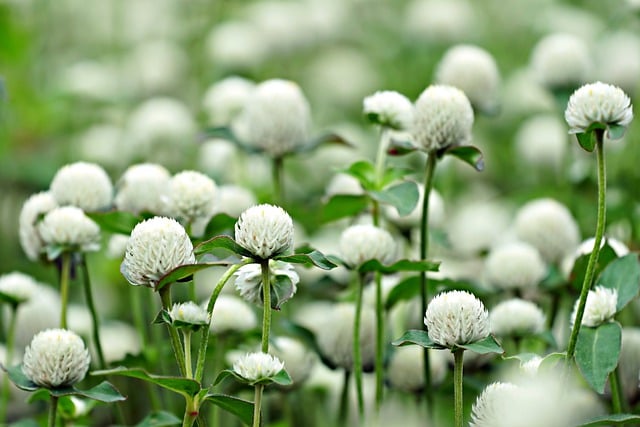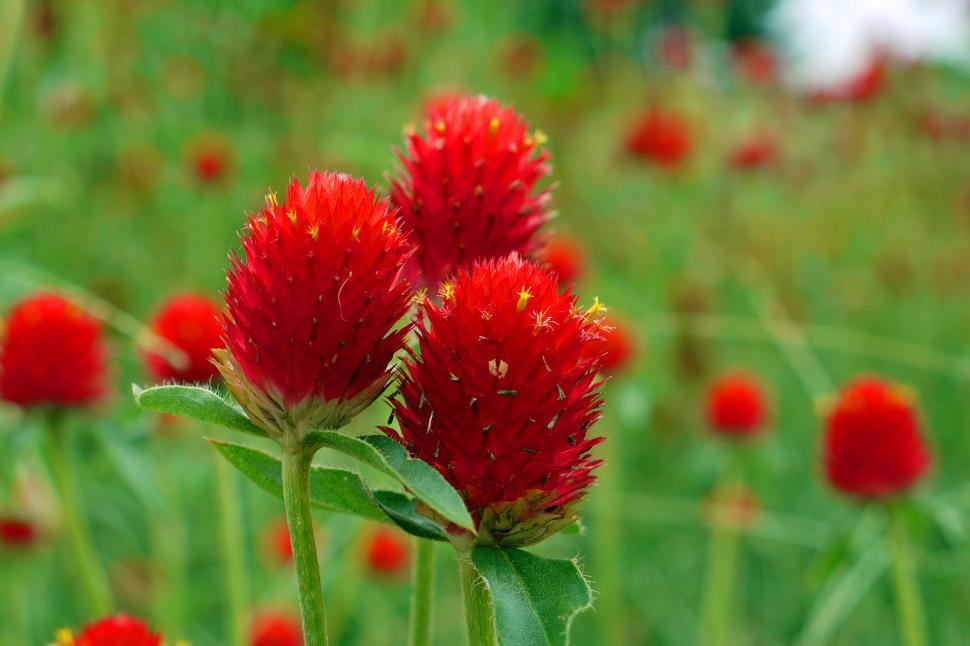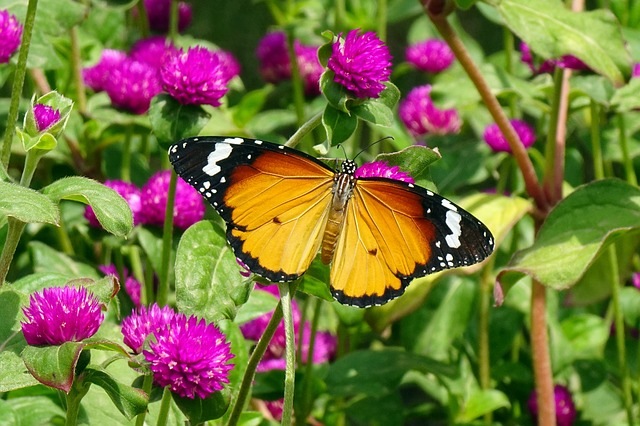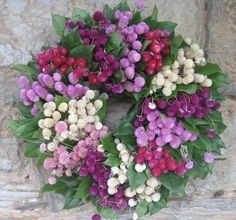Globe Amaranth (Gomphrena)
by CMG Kathleen S.

Photo by pixabay.com
It is that time of year again. Seed catalogs are appearing in mailboxes with enticing pictures and descriptions of flowering plants and vegetables. The possibilities for spring gardens are endless. One plant featured in these catalogs is Gomphrena, also known as globe amaranth. It is an amazing addition to a variety of gardens and xeriscapes.

Photo from pixabay.com
This plant has clover like blooms, actually bracts, in vibrant colors of purple, lilac, orange and red. It grows 6-24 inches tall by 6-24 inches wide depending on the variety and has a bushy appearance. One source referred to gomphrena as “the workhorse of the garden”. It is a perfect description because gomphrena will bloom from early summer through fall.

Photo from freerangestock.com
Butterflies and bees are highly attracted to all varieties of gomphrena. It thrives in most soils and can be found growing in lightly wooded areas, deserts and along roadsides. All soils must be well draining. Gomphrena is a sun worshiper, both heat and drought tolerant. Because of these tough characteristics in most Texas landscapes, the globe amaranth was named a Texas Superstar® in 2012. One draw back is that it is susceptible to powdery mildew in high humidity areas.

Photo from Pixabay
Gomphrena is a slow grower so start your seeds early, 6 to 8 weeks before the last average frost date. (The last average frost date for New Braunfels is March 18th and in San Antonio is March 5th.) Each seed should be at a depth of 1/8 inch. Light is required for germination. A heat mat is recommended to maintain a soil temperature of 70 to 75 degrees. Seeds usually sprout in seven to fourteen days. Gomphrena can also be directly sown into the garden, but it may be a challenge to keep the ground sufficiently moist in Comal County during the germination. Regardless of how gomphrena is propagated, germination rates can be low so plan accordingly.
Be careful not to overwater or expose seedlings to cool temperatures. Hardening off seedlings is recommended before moving these new plants outside permanently. When they are moved outside the soil temperature must be 65 degrees or higher. (Check the soil temperature early in the morning using a metal thermometer inserted into the soil 3 to 4 inches.)

Photo from Pinterest
Gomphrena is a tropical plant. Native to Central America and found in the southern portion of the United States. For zones 9-11, gomphrena is considered a short-lived perennial; it will not tolerate frost or freeze. At the end of the growing season, cut the plants back to ground level. Blooms can be dried and used in wreaths and other floral arrangements. The cut blooms will not lose their color or brightness. Other uses for this plant include traditional medicines and cosmetics.

Photo from Pinterest
Gardening possibilities are endless. Gomphrena makes a stunning addition to a Cottage Garden. Consider planting them with black eyed Susans, marigolds, summer phloxes, hollyhocks and daylilies. They work nicely in rock gardens too. Globe amaranth pairs nicely with lavender, stonecrop (and other types of sedums), coreopsis and hen and chicks. Add it to a xeriscape planting of cacti, yarrow, yucca and Texas sage. For fun try it with Jerusalem sage. And of course, gomphrena can also be grown in containers.
References: accessiblegardening.org, thedallasgarden.com, learningandyearning.com, thespruce.com, gardenia.net, epicgardening.com
